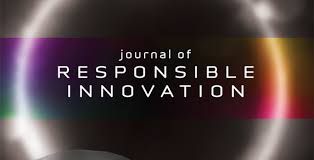In part 3 of this series we return to chapter 2 of the downloadable book.
Academic Books about Responsible Innovation
If we want to get an overview of the academic approach, we have to start with the first collection of articles in English: Responsible Innovation, Managing the Responsible Emergence of Science and Innovation in Society, published in 2013 and edited by Richard Owen, John Bessant and Maggie Heintz . This collection set the groundwork by addressing many of the themes that were to follow:
1. Identifying and managing the risks of innovation in the present and future
2. Building reflexive capacity into science and innovation to identify and manage the unanticipated wider impacts of innovation
3. Opening up dialogue around innovation and emerging technologies to understand wider acceptability and public concerns
4. Regulation, governance and adaptive management
5. Key questions regarding the concepts of responsibility, accountability and liability.
The book includes the influential concept of Value Sensitive Design from Jeroen van den Hoven that I mentioned in part one of this series alongside addressing the fundamental issues of governance, problems of communicating science, debate and dialogue, anticipation and hype.
A further font of publication has been the S.NET group. S.NET is the Society for the Study of Nanoscience and Emerging Technologies, with their series of publications leading the way with an entire collection related to the governance of science and scientific research.
The International Handbook on Responsible Innovation is the newest collection, edited by Rene von Schomberg and myself. Released in 2019, the handbook gathers together 65 authors and 36 chapters bringing together the main developments within the field since its inception.
The publishers Springer have a book series called Responsible Innovation that offers articles based upon work presented at a series of responsible innovation conferences hosted by the Netherlands Organization for Scientific Research. Many of the authors are Dutch, reflecting the importance of the Netherlands in the development of a particular standpoint on RI born from its governmental funded Responsible Innovation project.
Themes Addressed
One of the themes that is prevalent in the academic debate (and also from an EU perspective, something that I will look at in part 4), is public deliberation and involvement in the research process. As the field of responsible innovation has developed, this topic has become a core issue, as the idea that innovation should work for the public good must be based on an understanding of what the public want. This is not an unproblematic field however, as politics and power relations play their respective roles, and lots of literature has aimed to raise these issues (see the book chapter for further details).
A further group of researchers have embarked upon ethnographic fieldwork in order to find some answers to various questions about what actually happens if researchers aim to put a responsible innovation process into practice in real life settings, recounting their experiences (including about how their actions were interpreted by those involved).
Factors that come up include material barriers to participation and various issues related to the difficulty of stakeholder involvement, language and communication, politics, power, selection of public, alongside a host of others that are typical to the social sciences in general.
Journal of Responsible Innovation
As the name suggests, this journal is dedicated to responsible innovation. It is currently in its seventh volume, and represents about a third of all journal publications that address the issue of responsible innovation. From January 2021 the journal will be open access (it currently contains a mix of open access and paywall articles), containing articles from across the field that address all of the aspects so far discussed and much more from a host of different perspectives and standpoints.
The Bassetti Foundation website contains a series of reviews of the journal (each article is summarized), all of which are available here.
Several other journals publish academic articles about responsible innovation, names and details are available in the book.
Summary
There is a lot of academic literature out there, much of which is available open access. The field is very wide and multidisciplinary which means there is great variety. The academic field is only one of many within responsible innovation though, next week we will look at another, European governance approaches and policies regarding research funding.

